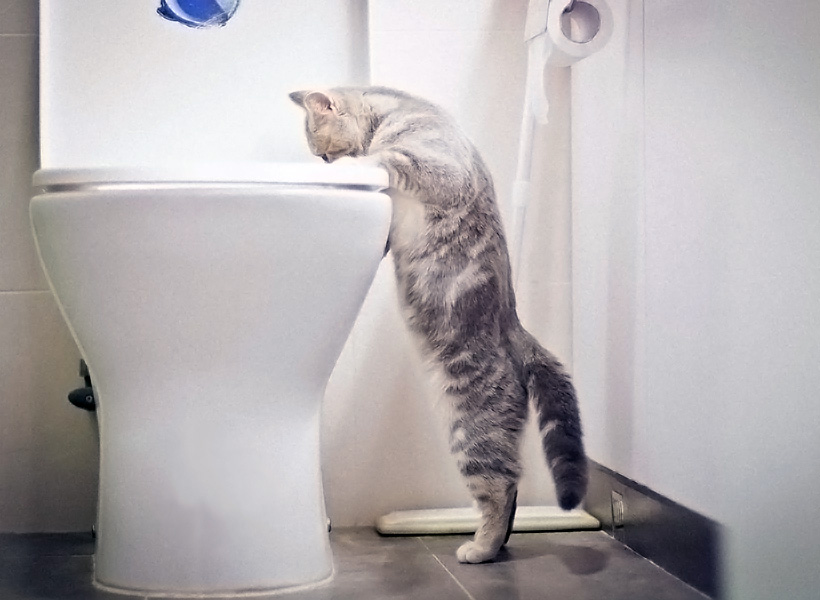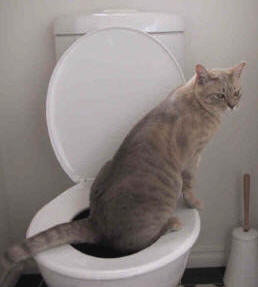Our Perils of Animal Waste in the Toilet
Our Perils of Animal Waste in the Toilet
Blog Article
The writer is making several great points related to Should you flush animal waste down the toilet in general in this post underneath.

When it pertains to throwing away waste, especially animal waste, many people typically turn to the hassle-free alternative of flushing it down the toilet. Nonetheless, this apparently very easy service can have serious effects for the environment and public health. In this short article, we'll discover why flushing pet waste down the toilet is a bad concept and supply alternate approaches for appropriate disposal.
Introduction
Proper waste disposal is critical for maintaining ecological sustainability and public health. While it may appear harmless to flush animal waste down the commode, it can bring about different issues, both for the setting and human well-being.
Risks of flushing animal waste
Environmental impact
Purging animal waste introduces harmful bacteria and pathogens into waterways, which can negatively influence marine ecosystems. These virus can infect water resources and injury marine life, interfering with delicate ecosystems.
Public health problems
Pet waste contains dangerous bacteria such as E. coli and Salmonella, which can present severe health dangers to people. Purging pet waste down the toilet can pollute water products, leading to the spread of diseases and infections.
Alternatives to flushing
Rather than flushing animal waste down the bathroom, there are a number of alternate disposal techniques that are much more environmentally friendly and hygienic.
Composting
Composting animal waste is an environmentally friendly method to get rid of it. By composting, organic matter is broken down right into nutrient-rich soil, read more which can be used to feed yards and plants.
Landfill disposal
Throwing away animal waste in a landfill is one more option. While not as environmentally friendly as composting, it is a more secure option to flushing, as it prevents the contamination of water resources.
Pet garbage disposal systems
There are specialized family pet garbage disposal systems offered that securely and hygienically deal with animal waste. These systems typically make use of enzymes to break down waste and eliminate odors.
Actions to correct animal waste disposal
To make sure correct disposal of pet waste, follow these steps:
Scooping and getting waste
Routinely scoop and bag animal waste utilizing eco-friendly bags. This protects against waste from contaminating the environment.
Making use of marked waste containers
Dispose of bagged pet waste in designated waste containers, such as garden compost containers or garbage dump bins. Avoid flushing it down the toilet in all prices.
Cleaning up litter boxes and animal areas regularly
Regularly tidy can and animal areas to prevent the buildup of waste and microorganisms. Use pet-safe cleaning items to preserve health.
Benefits of correct disposal techniques
Adopting appropriate disposal methods for pet waste offers a number of benefits:
Reduced environmental pollution
Appropriate disposal approaches decrease the danger of environmental pollution, protecting waterways and ecosystems from contamination
Reduced danger of water contamination.
By staying clear of flushing pet waste down the bathroom, the threat of water contamination is significantly decreased, securing public health.
Boosted hygiene and health
Correct disposal approaches advertise far better hygiene and hygiene, developing a more secure setting for both human beings and pets.
Final thought
In conclusion, flushing pet waste down the bathroom is damaging to the atmosphere and public health. By adopting alternative disposal approaches and adhering to appropriate waste management techniques, we can reduce the adverse effect of animal waste and add to a cleaner, healthier world.
Why You Should Never Flush Cat Poop Down the Toilet
A rose by any other name might smell as sweet, but not all poop is created equal. Toilets, and our sewage systems, are designed for human excrement, not animal waste. It might seem like it couldn’t hurt to toss cat feces into the loo, but it’s not a good idea to flush cat poop in the toilet.
First and foremost, assuming your cat uses a litter box, any waste is going to have litter on it. And even the smallest amount of litter can wreak havoc on plumbing.
Over time, small amounts build up, filling up your septic system. Most litter sold today is clumping; it is made from a type of clay that hardens when it gets wet. Ever tried to scrape old clumps from the bottom of a litter box? You know just how cement-hard it can get!
Now imagine just a small clump of that stuck in your pipes. A simple de-clogger like Drano isn’t going to cut it. And that means it’s going to cost you big time to fix it.
For an amusing, graphic tale of what happens when you flush too much litter down the toilet all at once, take a few minutes to read Gene Weingarten’s 2017 Washington Post column “So that’s what happens when you flush cat litter down the toilet.”
Parasitic Contamination
Believe it or not, your healthy kitty may be harboring a nasty parasite. Only cats excrete Toxoplasma in their feces. Yet it rarely causes serious health issues in the cats that are infected. Most people will be fine too if infected. Only pregnant women and people with compromised immune systems are at risk. (If you’ve ever heard how women who are expecting are excused from litter cleaning duty, Toxoplasma is why.)
But other animals may have a problem if infected with the parasite. And human water treatment systems aren’t designed to handle it. As a result, the systems don’t remove the parasite before discharging wastewater into local waterways. Fish, shellfish, and other marine life — otters in particular — are susceptible to toxoplasma. If exposed, most will end up with brain damage and many will die.
Depending on the species of fish, they may end up on someone’s fish hook and, ultimately on someone’s dinner plate. If that someone has a chronic illness, they’re at risk.
Skip the Toilet Training
We know there are folks out there who like to toilet train their cats. And we give them props, it takes a lot of work. But thanks to the toxoplasma, it’s not a good idea.
Leave the toilet to the humans, and accept your future litter cleaning duty.

Regularly tidy can and animal areas to prevent the buildup of waste and microorganisms. Use pet-safe cleaning items to preserve health.
Benefits of correct disposal techniques
Adopting appropriate disposal methods for pet waste offers a number of benefits:
Reduced environmental pollution
Appropriate disposal approaches decrease the danger of environmental pollution, protecting waterways and ecosystems from contamination
Reduced danger of water contamination.
By staying clear of flushing pet waste down the bathroom, the threat of water contamination is significantly decreased, securing public health.
Boosted hygiene and health
Correct disposal approaches advertise far better hygiene and hygiene, developing a more secure setting for both human beings and pets.
Final thought
In conclusion, flushing pet waste down the bathroom is damaging to the atmosphere and public health. By adopting alternative disposal approaches and adhering to appropriate waste management techniques, we can reduce the adverse effect of animal waste and add to a cleaner, healthier world.
Why You Should Never Flush Cat Poop Down the Toilet
A rose by any other name might smell as sweet, but not all poop is created equal. Toilets, and our sewage systems, are designed for human excrement, not animal waste. It might seem like it couldn’t hurt to toss cat feces into the loo, but it’s not a good idea to flush cat poop in the toilet.
First and foremost, assuming your cat uses a litter box, any waste is going to have litter on it. And even the smallest amount of litter can wreak havoc on plumbing.
Over time, small amounts build up, filling up your septic system. Most litter sold today is clumping; it is made from a type of clay that hardens when it gets wet. Ever tried to scrape old clumps from the bottom of a litter box? You know just how cement-hard it can get!
Now imagine just a small clump of that stuck in your pipes. A simple de-clogger like Drano isn’t going to cut it. And that means it’s going to cost you big time to fix it.
For an amusing, graphic tale of what happens when you flush too much litter down the toilet all at once, take a few minutes to read Gene Weingarten’s 2017 Washington Post column “So that’s what happens when you flush cat litter down the toilet.”
Parasitic Contamination
Believe it or not, your healthy kitty may be harboring a nasty parasite. Only cats excrete Toxoplasma in their feces. Yet it rarely causes serious health issues in the cats that are infected. Most people will be fine too if infected. Only pregnant women and people with compromised immune systems are at risk. (If you’ve ever heard how women who are expecting are excused from litter cleaning duty, Toxoplasma is why.)
But other animals may have a problem if infected with the parasite. And human water treatment systems aren’t designed to handle it. As a result, the systems don’t remove the parasite before discharging wastewater into local waterways. Fish, shellfish, and other marine life — otters in particular — are susceptible to toxoplasma. If exposed, most will end up with brain damage and many will die.
Depending on the species of fish, they may end up on someone’s fish hook and, ultimately on someone’s dinner plate. If that someone has a chronic illness, they’re at risk.
Skip the Toilet Training
We know there are folks out there who like to toilet train their cats. And we give them props, it takes a lot of work. But thanks to the toxoplasma, it’s not a good idea.
Leave the toilet to the humans, and accept your future litter cleaning duty.

Do you like more info about Don't Flush Your Pets Poo Down The Loo, Vet Warns? Try to leave feedback directly below. We'd be happy to know your views about this page. We are looking forward that you visit us again in the future. If you please pause to promote this write-up if you enjoyed reading it. We treasure your readership.
Click Here To Read More Report this page